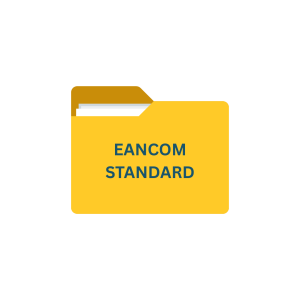Introduction to PIM Solution
The 3 core features of a product information management (PIM) solution that is crucial for a business aiming to streamline its product information and enhance its omnichannel presence. are,
- Data centralization
- Data enrichment
- Data distribution
Key Takeaways
- A Product Information Management (PIM) solution serves as a centralized platform to manage, store, and distribute product data across various channels.
- The three core features of a PIM system—data centralization, data enrichment, and data distribution—help businesses ensure product information accuracy, enhance product descriptions, and efficiently manage omnichannel product distribution.
- By streamlining these functions, a PIM solution improves customer experience, reduces time-to-market, and boosts overall operational efficiency, making it a critical tool for businesses handling vast amounts of product data.
3 Core Functions of a PIM Solution
1. Data Centralization
The core function of data centralization within a product information management (PIM) solution is multifaceted, addressing several key operational challenges and streamlining processes for businesses.
Here’s how it works:
Central Repository and Data Standardization:
PIM acts as a centralized hub for all product data, significantly reducing data silos and promoting efficient data sharing both internally and across company boundaries.
It enforces data standardization and incorporates workflow management for collaborative creation, approval processes, and integration with systems like ERP and e-commerce platforms, ensuring data consistency and accuracy across all channels.
Integration and Quality Management
Tailored interfaces allow for the integration of suppliers and service providers, streamlining the onboarding of new products and reducing the time needed for input, verification, and enrichment of product data.
Superior data quality is maintained through rule-based workflows that check the completeness and quality of existing data, facilitating accurate and detailed product information, including high-quality images and multimedia content.
Localization, Customization, and Multichannel Management
Equipped with translation features, PIM can alleviate challenges and minimize costs associated with localization, ensuring that product information meets local and international regulations.
The enriched and accurate product data enables seamless integration with next-gen technologies for personalization and customization, facilitating consistent and accurate distribution of product information across different platforms such as online stores, marketplaces, social networks, and printed catalogs.
Through these mechanisms, data centralization in PIM not only enhances operational efficiency by automating repetitive tasks and simplifying complex processes but also ensures that customers receive the same product information regardless of the channel they use, significantly improving the quality and detail of product information.
2. Data Enrichment
Data enrichment within product information management (PIM) systems is a critical process that significantly enhances the quality and comprehensiveness of product data. This process involves several key steps and offers a range of benefits to businesses, including:
Key Steps in data enrichment:
Importing: Gathering and importing product data from various sources into the PIM system.
Transforming: Adjusting and converting the imported data into a standardized format suitable for further processing.
Enriching: Enhancing product data by adding valuable content, improving its accuracy and quality, and ensuring that product descriptions and images are unique and engaging.
Distributing: Once enriched, the product data is ready to be distributed across multiple sales channels, ensuring that customers have access to detailed and compelling product information.
Benefits of Data Enrichment
- Eliminates manual handling of product data, significantly increasing productivity and reducing the likelihood of errors.
- Reduces product returns by providing customers with accurate and comprehensive product information, leading to a more satisfying shopping experience.
- Enhances SEO and rankings by ensuring product data is rich in keywords and aligned with global standards, improving visibility and driving traffic.
- Effective eCommerce Product Enrichment tactics:
- Organize products into clear categories or taxonomies for easier navigation.
- Include certification information, size details, and use intelligent tagging to improve searchability and relevance.
- Focus on main products, fill content gaps by studying demographics and location data to tailor product information to target audiences.
- By investing in data enrichment through a PIM system, businesses not only streamline their operations but also significantly enhance the customer experience. This leads to improved conversions, facilitates cross-selling and up-selling opportunities, and ensures compliance with global standards.
3. Data Distribution
In product information management (PIM), data distribution is a pivotal function that ensures product information reaches the intended platforms and channels accurately and efficiently. This process encompasses several key activities:
Efficient Syndication and Exporting
PIM systems facilitate the syndication of product information across a wide array of channels, including e-commerce platforms, marketplaces, and social media networks, ensuring a consistent brand presence.
Custom feeds can be created within PIM to meet the specific requirements of different sales channels, allowing for tailored product presentations that cater to the unique needs of each platform.
Challenges and Solutions in Product Content Distribution
Businesses often face challenges such as maintaining data quality and consistency, adhering to channel-specific requirements, and ensuring the security of data during distribution.
Solutions like the Gepard PIM Tool streamline these processes, enhancing operational efficiency by addressing these challenges head-on. This tool automates data integration and distribution, ensuring data quality and consistency across channels.
Monitoring and Analytics
PIM systems provide tools for tracking the performance of product content across channels, offering valuable insights into data distribution effectiveness.
These insights include understanding specific parts of the data that perform well, identifying outliers, and analyzing central tendencies, enabling businesses to make informed decisions and optimize their product information strategy.
By leveraging the capabilities of PIM for data distribution, businesses can ensure that their product information is not only accurately disseminated across all desired channels but also optimized for performance, leading to increased visibility, customer engagement, and ultimately, sales.
Commport PIM Solution
Commport PIM Solution Now Listed On
Frequently Asked Questions
The three core functions of a Product Information Management (PIM) solution are:
- Data Centralization: PIM solutions centralize all product data into a single repository, ensuring that all product information is consistent, accurate, and up-to-date across all channels.
- Data Enrichment: PIM solutions enhance product data with additional information such as descriptions, images, specifications, and attributes, making the product listings more comprehensive and appealing.
- Data Distribution: PIM solutions facilitate the distribution of product data across various channels including e-commerce platforms, marketplaces, print catalogs, and retail partners, ensuring consistency and coherence in product presentation.
Data centralization in a PIM solution benefits a business by:
- Ensuring all product information is stored in a single, easily accessible location, reducing data silos and duplication.
- Providing a single source of truth for product data, which helps in maintaining accuracy and consistency across different channels.
- Streamlining the process of updating product information, as changes made in the PIM system are automatically reflected across all connected platforms.
Data enrichment in a PIM solution plays a crucial role by:
- Adding detailed and enhanced information to product listings, such as high-quality images, detailed descriptions, technical specifications, and rich media.
- Improving the overall quality and completeness of product data, which can enhance customer experience and drive higher engagement and sales.
- Facilitating better product searchability and SEO performance by incorporating relevant keywords and metadata.
A PIM solution handles data distribution to various sales channels by:
- Integrating with multiple platforms such as e-commerce websites, marketplaces, print catalogs, and retail systems.
- Automatically updating and synchronizing product information across all channels, ensuring that each platform has the most current and accurate data.
- Supporting different data formats and standards required by various channels, simplifying the process of sharing product information with diverse partners and platforms.
Having a PIM solution is critical for businesses with extensive product catalogs because:
- It streamlines the management of large volumes of product data, making it easier to organize, update, and maintain.
- It reduces errors and inconsistencies in product information, which can lead to increased customer satisfaction and reduced return rates.
- It enables efficient and consistent distribution of product data across multiple channels, which is essential for maintaining a cohesive brand image and maximizing sales opportunities.
- It saves time and resources by automating many manual processes involved in product data management, allowing teams to focus on strategic tasks.








